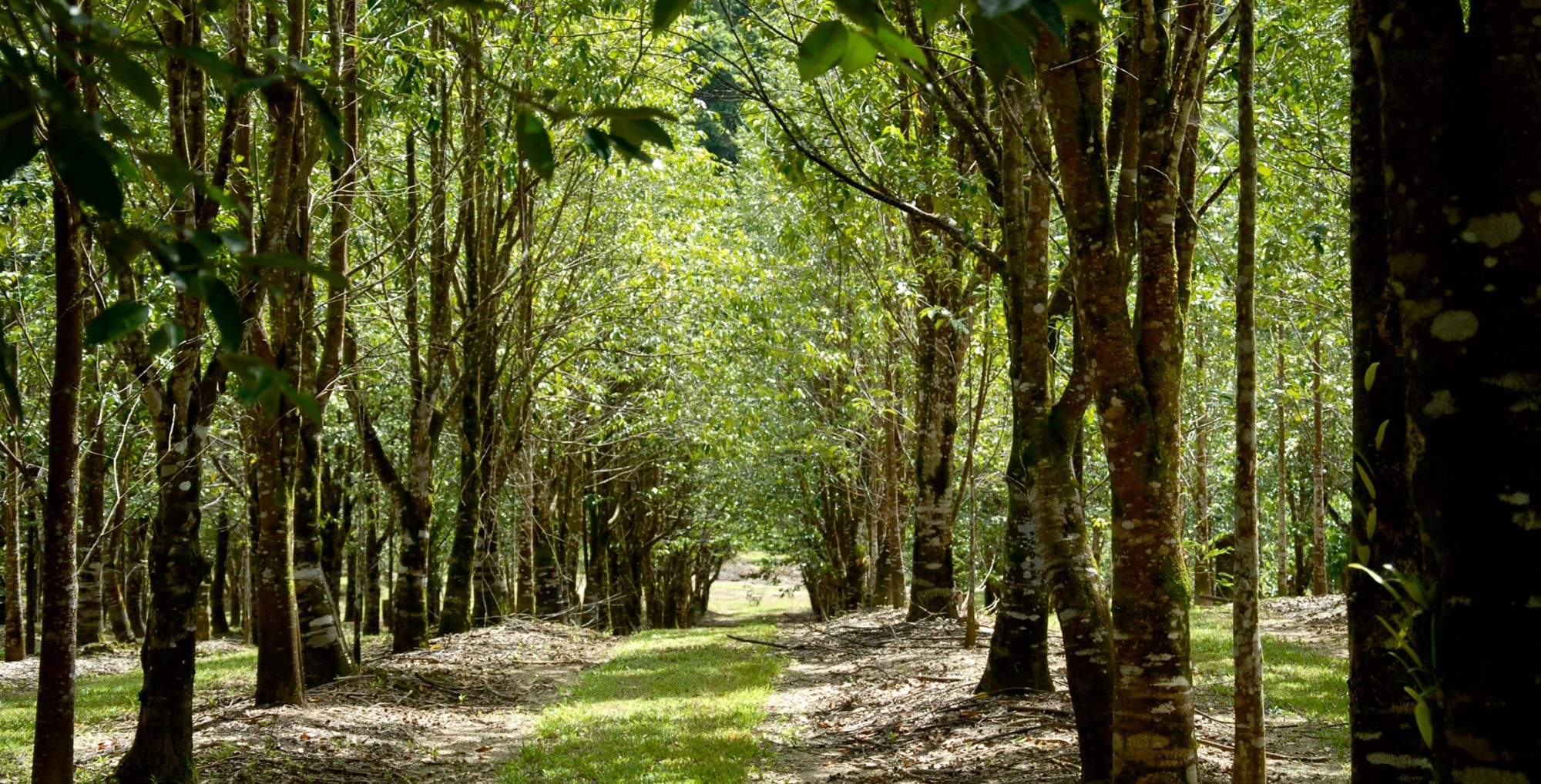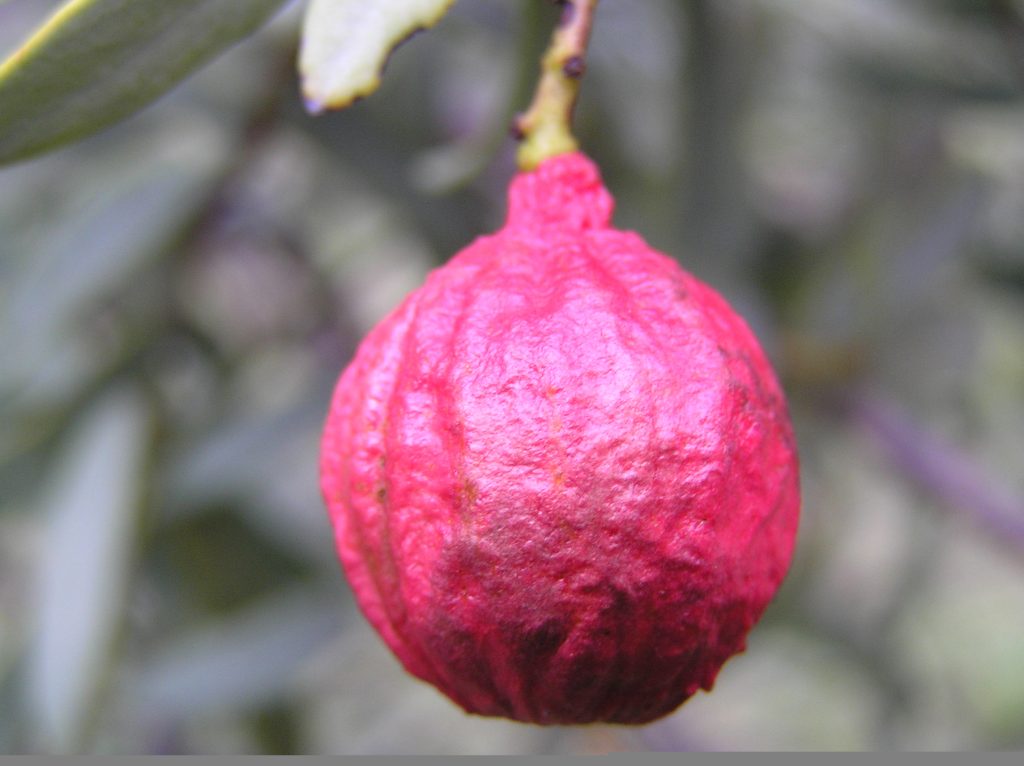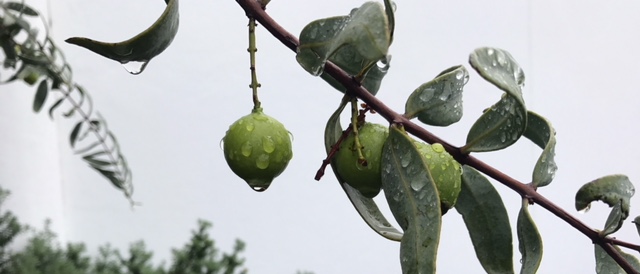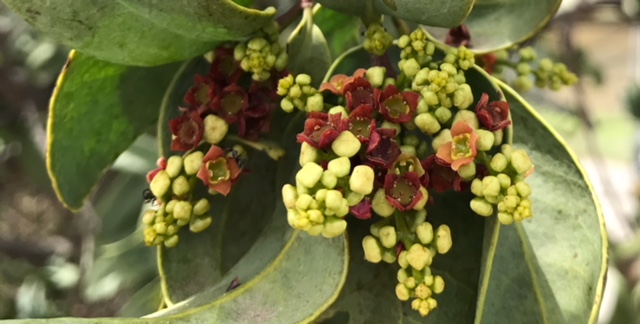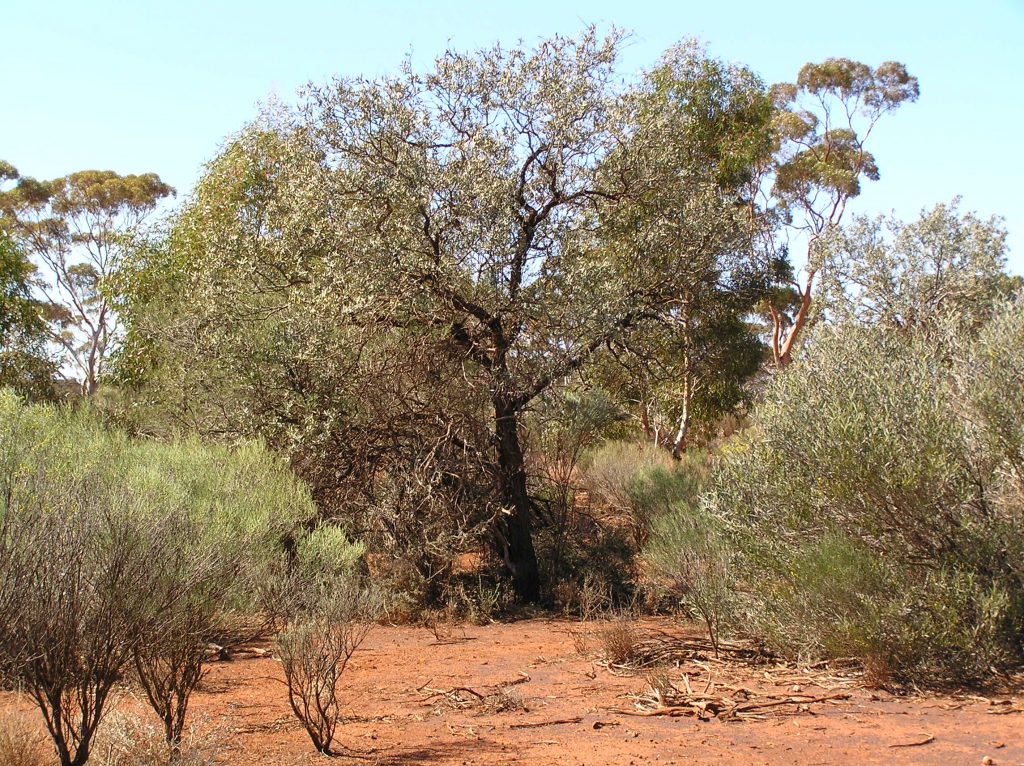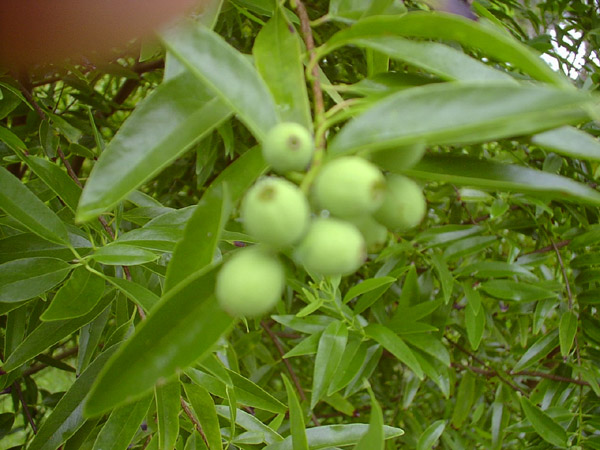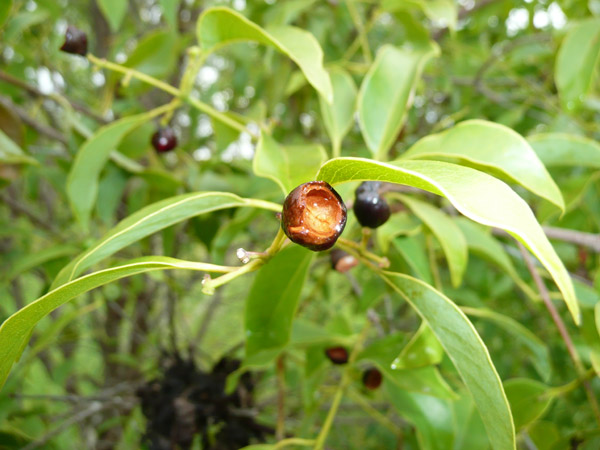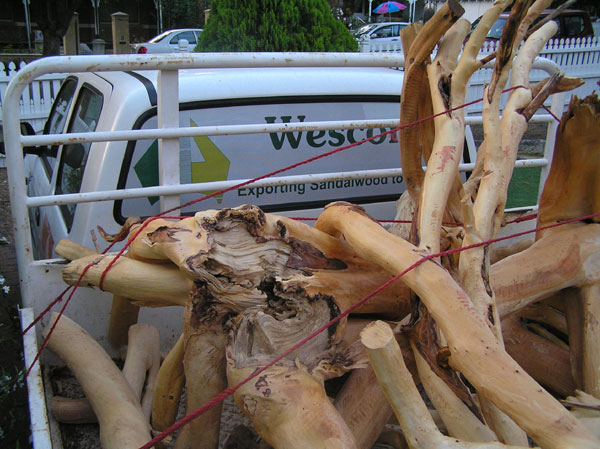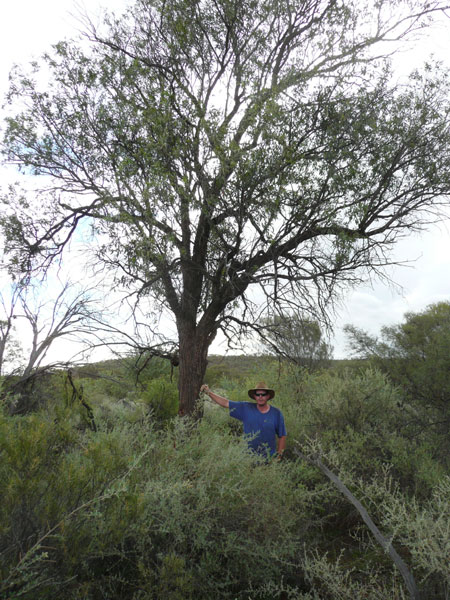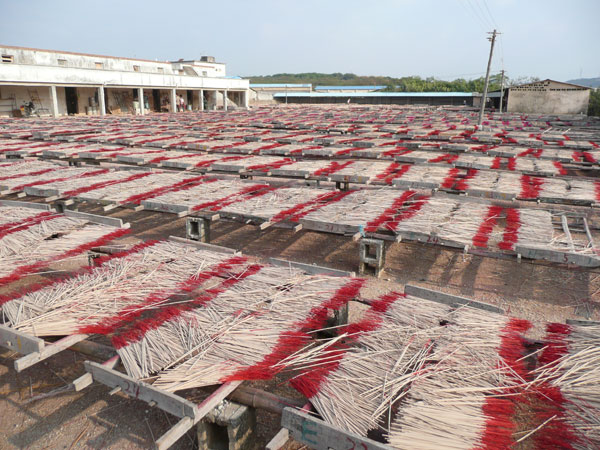Sandalwood is an aromatic timber that has been used for thousands of years ranging from incense for religious ceremonies agarbatti, perfume and cosmetics, medicinal treatments, aromatherapy, insect repellency, furniture and carvings, and chewing tobacco.
The value of the sandalwood is in the heartwood which contains santalol and the make up of the alpha and beta percentage of the heartwood will dictate the value of the sandalwood.
Sandalwood is part of the Santalum genus and there is in excess of 20 species throughout Asia, Australia and the Pacific. There are currently only 7 species harvested commercially from the wild. In order of value, starting at the highest, (but subject to the age and conditions of growing) there is album; yasi; austrocaledonicum; macgregorii; spicatum; lanceolatum; and acuminatum.
The most famous sandalwood is the “Mysore” sandalwood which is album and growing in southern India. Album grows wild throughout India; Sri Lanka; South East Asia; Indonesia; and Timor. The true Yasi is very similar to album and grows in Fiji and Tonga, but there are many similar looking woods that have little value. There are now album / yasi crosses growing in Fiji which add to the confusion. Austrocaledonicum grows in Vanuatu and New Caledonia with some areas yielding better santalols than others. Again there are many substitute woods of little value in this region and you need to know what you are looking at. Macgregorii grows in Papua and New Guinea and has many sub-species and “look a likes” that make it difficult to trade. The last three species are grown in Australia and harvested in a sustainable manner.
History Of The Industry
It is difficult to know exactly when trade between Middle East, India, China, Australia and the Indonesian Archipelago started. We know, from the Chinese sailing ship measuring 72 feet long and 27 feet wide recovered in the old harbour of Houshu in Quanzhou Bay in 1974, that during the Song Dynasty of 960-1279, they were trading in peppers, and sandalwood from the cargo on board. The sea silk route had been operating long before this Song period. Wescorp has seen the sandalwood cargo from this ship of over 800 years ago.
The use of sandalwood in the Middle East and India goes back further. Some historians have revealed that Sandalwood and Agarwood oils were used for embalming of the Pharaohs in ancient Egypt. Hundreds of years ago, members of the royal family of Thailand who committed crimes were placed in silk bags and beaten to death using Sandalwood clubs.
We know the Portuguese were the first Europeans to trade out of Malacca from 1511. Portuguese merchants were sending their ships down to Timor and Flores to buy sandalwood for trade in China.
The famous English buccaneer William Dampier reported seeing sandalwood in the Pacific in his voyages of the late 17th century.
Around the start of 1800, the Sydney merchants started to trade indirectly in sandalwood to China. Ex-convict and famous merchant Simeon Lord (1771 to 1840), is accredited as possibly being the first Australian to start the Pacific sandalwood trade with his schooner “Marcia” in 1803. This was the start of the Chinese referring to “Sydney sandalwood”, which actually came from Fiji, not Australia.
Up to the middle of the nineteenth century, China was almost the sole source of tea, and tea was becoming a necessity to the English. During 1811 to 1819, the total value of goods imported to England through the East India Company from China was over seventy two million pounds, of which tea imports accounted for over seventy million pounds.
This pushed the merchants to find Sandalwood in the Pacific and English trade commenced at the end of the eighteenth century. When the East India Company monopoly was finally broken in 1834, the Australian merchants from Sydney openly traded in Sandalwood from the Pacific to China.
By 1843 news of the high prices being received for Sandalwood in Singapore reached Perth in Western Australia. Explorer Ensign Dale had documented the existence of sandalwood in 1832 in the Swan River colony. The Santalum spicatum from Western Australia was tested in England and confirmed to be “equal to the East Indian Sandalwood”.
In 1844 a group of settlers from the Avon Valley set about establishing a Sandalwood trade with a trial shipment of 4 tons of Sandalwood logs to Bombay in the schooner “Champion” and received an excellent price of $20 per tonne. The Western Australian Sandalwood Industry had commenced.
By 1848, Sandalwood exports were 1335 tonnes and valued at over $26,000. In the same period, the colony had total exports of over $59,000. Western Australian Sandalwood became known as “Sydney Sandalwood” because the market had not heard of Perth or Fremantle. Later it was recognized as “New Mountain Sandalwood” in China which rivalled the Indian Sandalwood which was known as “Mysore Sandalwood” or “Old Mountain Sandalwood”, translated to “Lau Shan”.
By 1848, the Chinese market was flooded with Sandalwood from Western Australia, the Pacific and Indonesia and prices crashed. Western Australia had priced itself out of the market with Government export tax, tolls and licence fees. Trade from Perth in “New Mountain Sandalwood” did not resume until 1857 when 280 tonnes were exported.
In 1886 attempts were made to set up a public company in Albany for the extraction of sandalwood oil but they failed to raise the necessary funds. In 1890, the WA Distillery Company of London set up in Albany and in September of that year the first cases of Santalum spicatum sandalwood oil were shipped out. Then it disappeared and there are no further records to complete the story.
Many other small distilleries were set up in the 1890’s and earlier 1900’s but the results of the oil were considered very poor and they were possibly using very poor methods.
Horace Marr arrived from London to the Perth in 1905 at the age of 21. While Marr was working for Plaimarr Ltd (a joint venture between Plaistowe and Marr) he experimented with different methods and by 1919 he found that he needed to powder up the wood first with petrol and then co-distill it with glycerine. By 1921 he was producing very good sandalwood oil. Sandalwood oil continued to be produced until the mid 1960’s in the Plaistowe in West Perth when it shut down.
By 1929 there was a flood of sandalwood on the market and times were tough with the start of the depression. In 1929 the State Government passed the Sandalwood Act. Part of the consequences of this act were that;
- all Santalum species growing in Western Australia were now vested in the State
- the current sandalwood exporters had to combine to form one company which became known as the Australian Sandalwood Company
- the amount harvested per annum was restricted to ensure that it would remain a sustainable industry for the future
The Australian Sandalwood Company continued to be responsible for the WA sandalwood until in 1994 when Conservation and Land Management (CALM) called for expressions of interest to process and market WA sandalwood on behalf of the State. Wescorp Sandalwood was successful in this tender and has been responsible since.
In 2000 CALM split and Forest Products Commission (FPC) was formed to manage the harvesting of the State resources which included sandalwood.
In 1997 Mount Romance was the successful tenders for the extraction of oil from sandalwood supplied by CALM. Due to the hard work and vision of the founder, Mr Steve Birkbeck, Mount Romance is a successful company supplying spicatum oil to many parts of the world. Unfortunately due to illness Steve sold the company in 2004 and it has changed hands three times since then.
